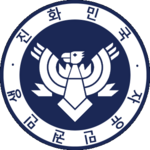Zhenian language
| Zhenian | |
|---|---|
| 진국어 / 陳國語 | |
| Pronunciation | Jhin.ɡu.ɡʌ |
| Native to | Zhenia |
| Ethnicity | Zhenian |
Native speakers | 936,100,000 (2019) |
Zhenianic
| |
Early forms | Danguk language
|
Standard forms | |
| Dialects | See "dialects" below |
| Jinmun (primary) Seomun Elyrian script Valentian script Kapukan Script | |
| Official status | |
Official language in | Zhenia |
| Regulated by | National Institute of the Zhenian Language (국립국어원) |
| Language codes | |
| ISO 639-1 | zh |
| ISO 639-2 | zhe |
| ISO 639-3 | – |
The Zhenian language (Seomun: 陳國語, Jinmun: 진국어, Valentian: Jinguk-eo) is a language in Tarsis spoken by about 936 million people worldwide. A member of the Zhenian language family, it is the national language and the most widely spoken language in Zhenia, with numerous dialects that vary by region. It is also spoken extensively among the Zhenian diaspora throughout the continent of Tarsis, as well as parts of western Veharia and Florencia, as a result of continuous Zhenian migration since the 16th century. Despite the existence and development of numerous regional dialects throughout Zhenia and beyond, it has retained its status as the primary language spoken in Zhenia and by the Zhenian people, while its standard language has remained more or less constant, following the Donghan dialect seen mostly in the Danguk Peninsula.
With its roots from ancient Danguk and Yemeg language spoken in the Musudan Highlands, the existence of the Zhenian language as a language of its own were consolidated throughout much of modern-day Zhenia during the Zhen dynasty, when it adopted the Seomun script and much of the vocabulary utilized in the Jin language spoken on the mainland. The Jinmun script, introduced during the Shindan dynasty, later replaced Seomun as the default script of the Zhenian language, although Seomun has often been used in tandem with the Jinmun script in the mainland to this day.
Linguistically, the Zhenian language is classified as a tract of the Zhen language family, which includes an array of both surviving and now extinct languages in East Tarsis, including Haedongese (spoken primarily in the Haedong Islands and the east coasts of the Danguk Peninsula) and Yemegese. Grammatically, Zhenian is an agglutinative language, with much of its vocabulary formed through the connection of unmodified morphones, while some verbs, adjectives and other exceptional terms see irregular conjugations and make use of a mix of formal and informal tenses.
History
Names
Classification
Dialects
Donghan dialect
Seoan dialect
Grammatical Structure
Phonology
Morphones
Syntax
Sentence structure
Speech levels and honorifics
Script
Seomun
Jinmun
Gender
Vocabulary
While the core of the Zhenian vocabulary consists of words native to the Danguk Peninsula; however, a significant portion of its vocabulary has origins from Seomun and the mainland, particularly used to express abstract ideas, which are either borrowed directly from words used in the mainland or are words written in Seomun script but are linguistically derived from the Danguk Peninsula. While the exact percentage of such Seomun-derived words in the Zhenian lexicon remains disputed, particularly regarding the issue of whether less commonly-used but Seomun-based words count in the lexicon today, average speculations regarding the percentage of Seomun-based words are around 35% of the entire Zhenian lexicon.
The Zhenian language is also home to a significant number of loanwords from outside both the mainland and the Danguk Peninsula, with the largest influencers being northern languages used by the Balakhaat Zhenians, eastern languages based on Polynesian languages used in Zihara Luhan and Auroran languages including Elyrian and Kathic. Unlike other languages that influenced the Zhenian lexicon, most Auroran languages have contributed to new words in the Zhenian language primarily after the 19th century.
